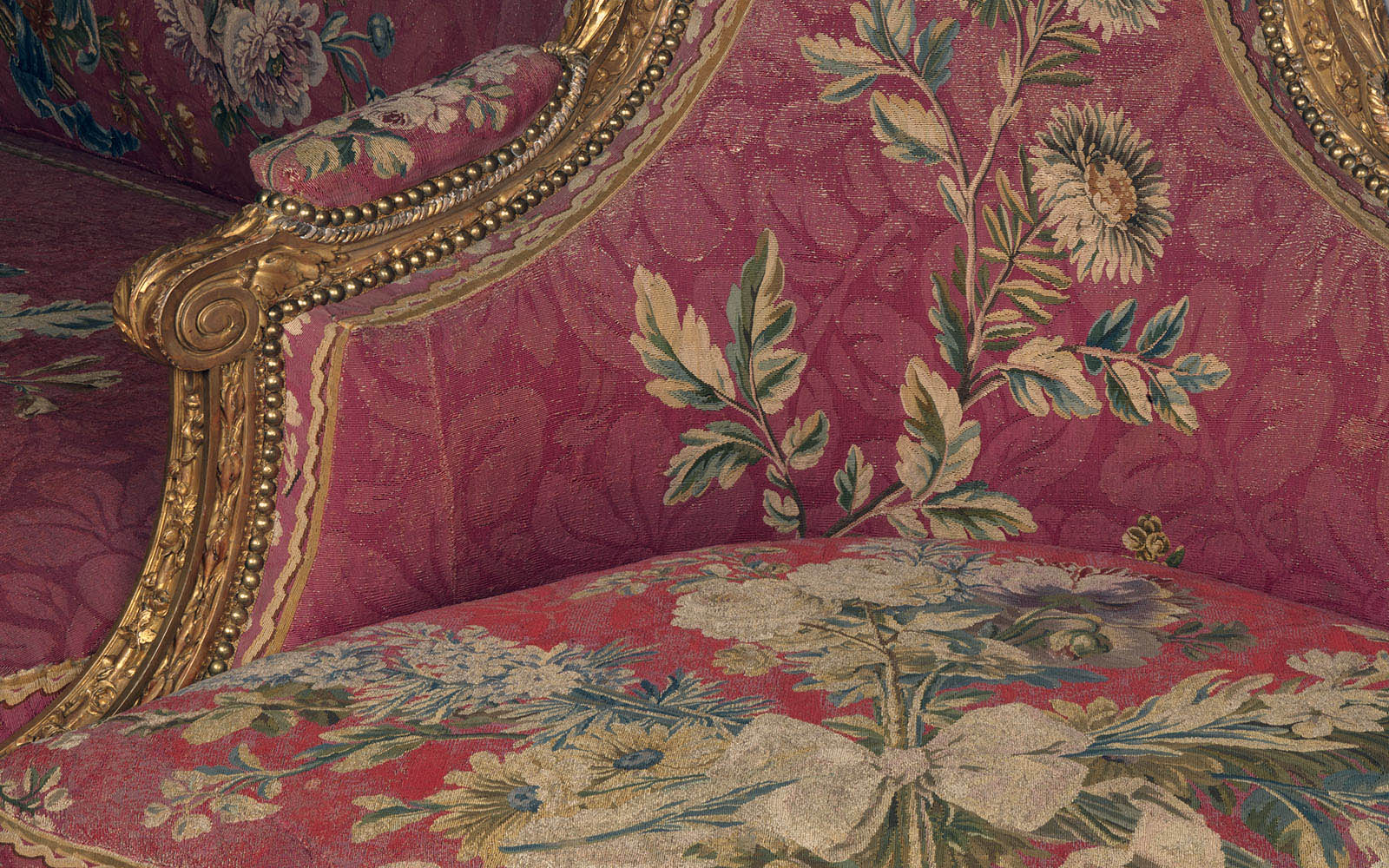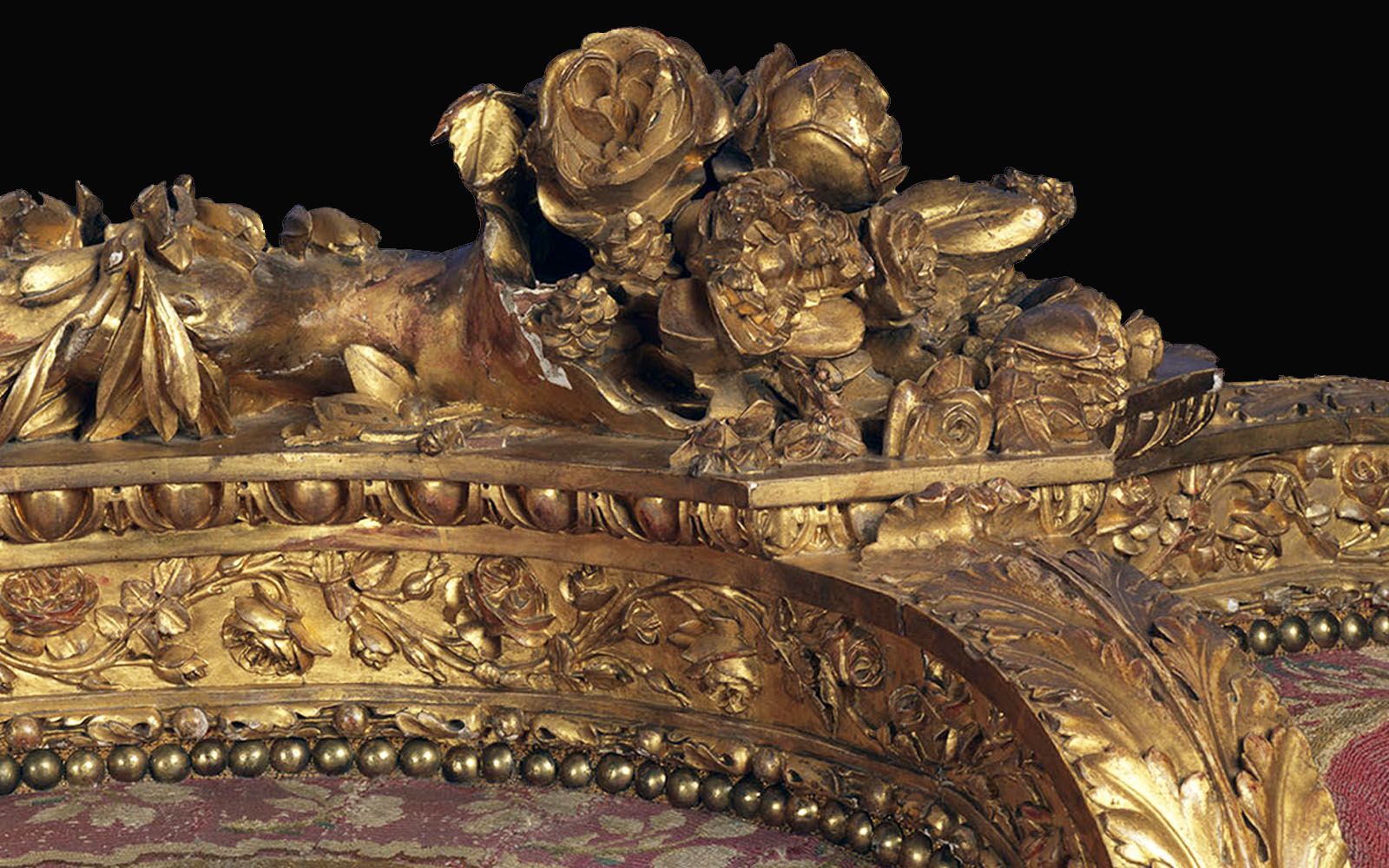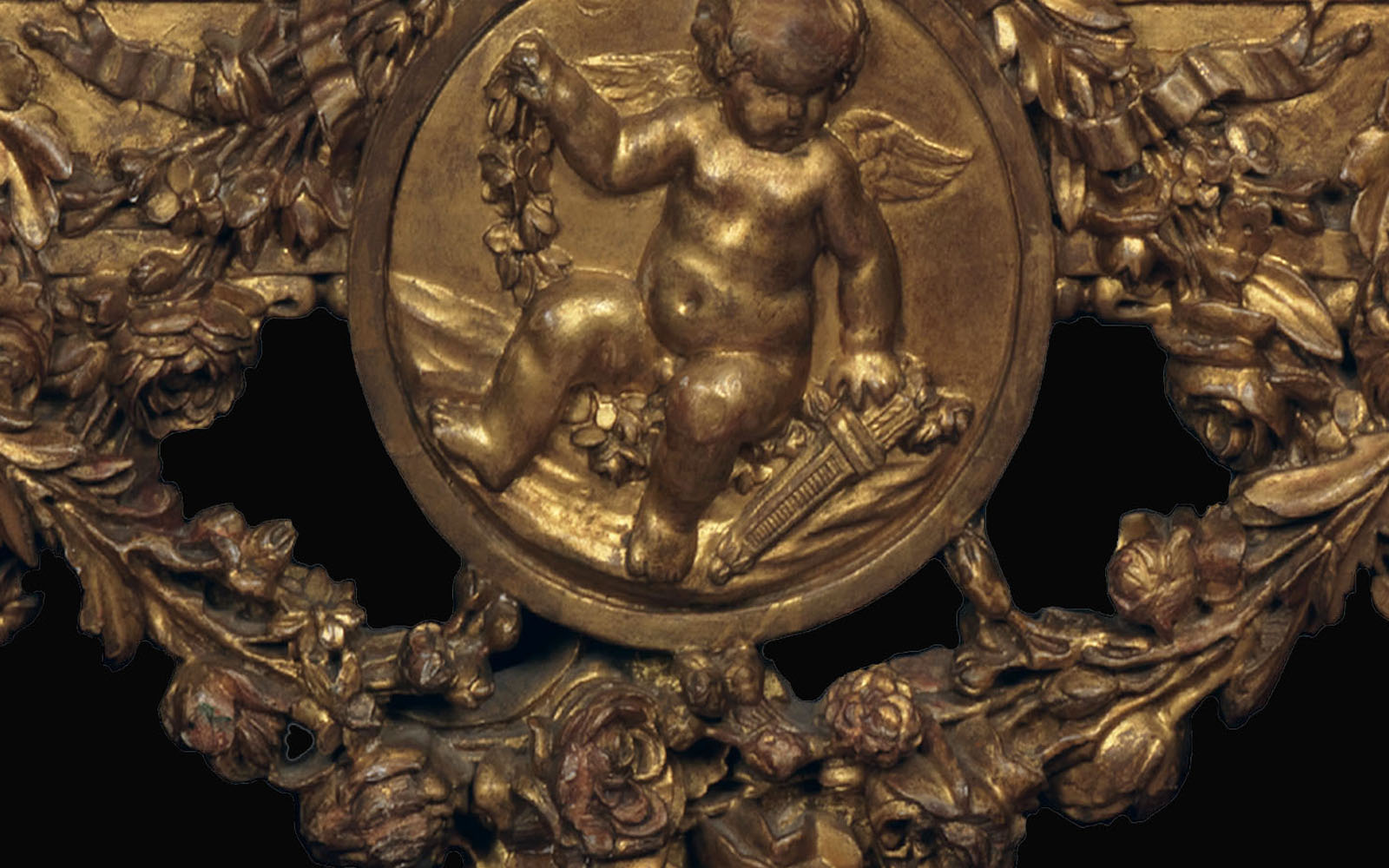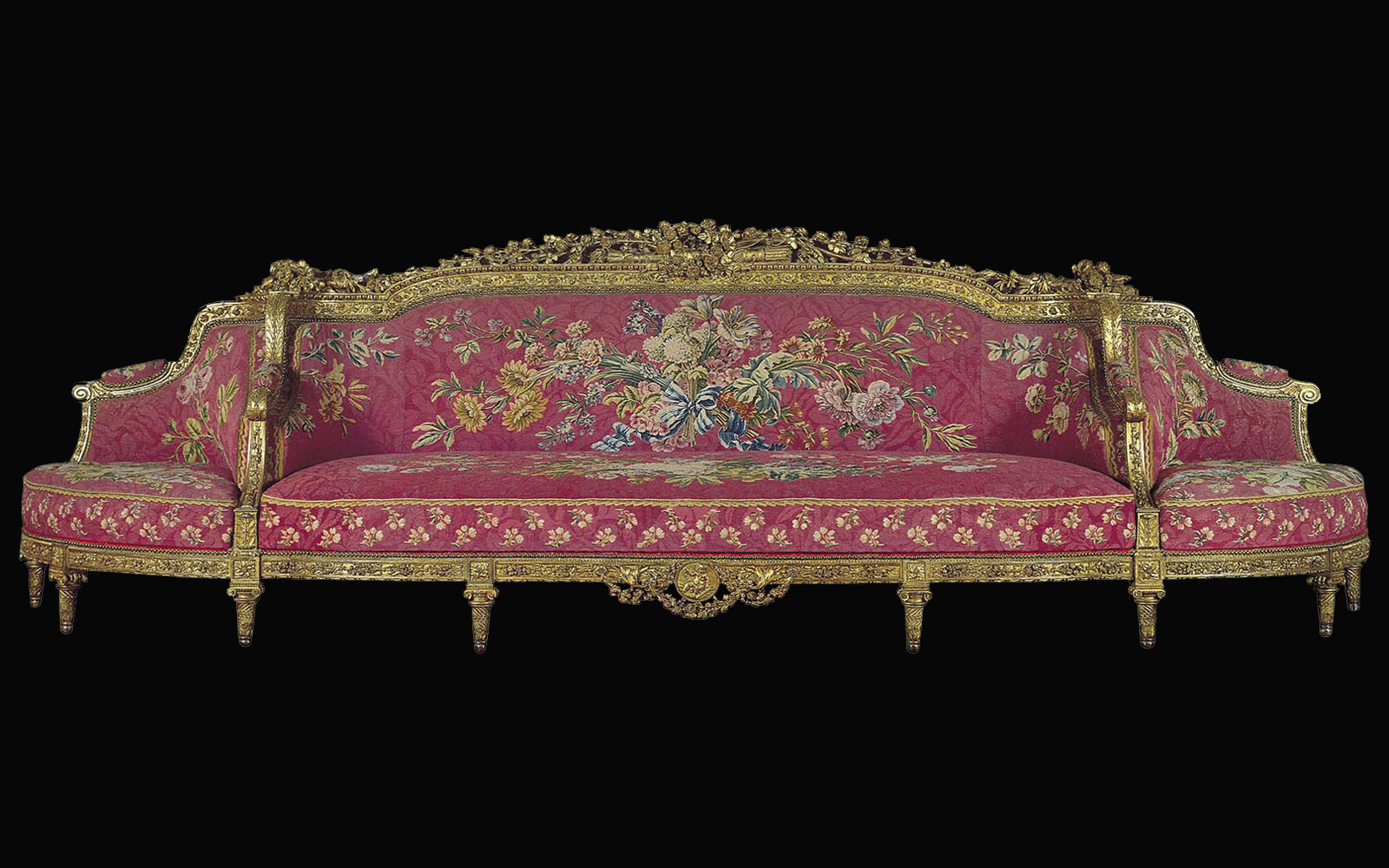Canapé à confidents

This large, imposing sofa has a triangular seat at either end and is completely upholstered in Gobelin tapestry. This type of sofa – à confidents – is part of a set of furniture created in the 18th century, when the creativity and virtuosity of the French cabinet-makers was at its peak.
The structure of the couch (walnut and beech wood gilded with gold leaf) features rich sculptural decoration. On the upper part, a quiver of arrows and a flaming torch are crossed and tied with a ribbon. Above this, a garland of flowers extends out to either side with roses and berries sculpted in high-relief, culminating in cornucopias from where more flowers spill out.

A frieze depicting a garland of flowers gilded with gold leaf runs the entire length of the wooden structure. This sofa was commissioned for the summer room belonging to Louis XVI’s aunts at Bellevue Palace and bears the stamp of Jean-Nicholas Blanchard, a master cabinet-maker, who collaborated with sculptor Barthélèmy Mamès Rascalon for this piece.

In the early 19th century, the couch could be found in Napoleon’s quarters at the Tuileries Palace before being taken to Fontainebleau Palace. After being sold sometime in the 19th century, it became part of the Guinness Collection in London then of the Hamilton Collection in Edinburgh. It was brought to Palácio Foz in Lisbon after it was acquired at the sale of the Hamilton Collection and was among the purchases made by the Marquis of Foz for the palace’s interior redecoration. In 1901, the couch returned to France after it was sold at the auction of the assets from Palácio Foz.
The tapestry of the upholstery is not original. According to P. Verlet, the original fabric was blue and white silk. It has been demonstrated that in 1807, when the couch was at the Tuileries Palace, the upholstery was already that which can be seen today. The tapestry, produced by the Gobelins Manufactory during the second half of the 18th century, displays a background with leaf motifs in two shades of red (carmine), creating a damask effect.

Both the back of the couch and the seat feature large bunches of flowers tied with blue striped ribbons and big bows. The fabric was originally made for a straight seat and had to be adapted to the unusual silhouette of this couch. It is believed to have been based on a cartoon by Maurice Jacques, most likely in collaboration with Louis Tessier. The tapestries were made at Jacques Nielson’s workshop at the Gobelins Manufactory.
Clara Serra
Curator at the Calouste Gulbenkian Museum